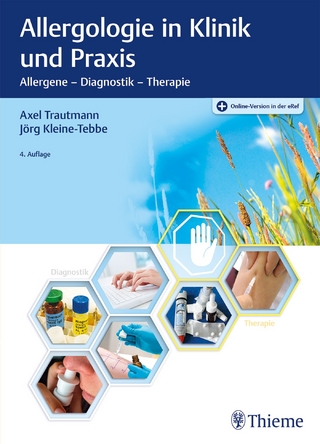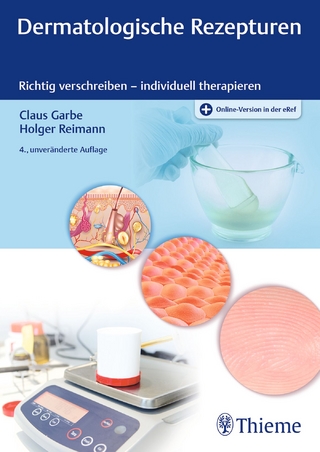
Severe Asthma in Children and Adolescents
Springer International Publishing (Verlag)
978-3-030-27430-6 (ISBN)
- Titel wird leider nicht erscheinen
- Artikel merken
Severe Asthma in Children and Adolescents: Mechanisms and Management is designed to be a practical guide, opening with an introduction on the epidemiology of severe childhood asthma, as well as a discussion of special considerations of the disease unique to the preschool-aged patient. The distinctions between the diagnosis and management of asthma in young children of various ages, and specific approaches for the adolescent with severe asthma, including the transition into adult care are then addressed. Finally, the book closes with a discussion on the current state and future avenues for severe asthma research.
Severe Asthma in Children and Adolescents is an indispensable reference for the healthcare professional, for basic and translational researchers, as well as for students, residents and fellows.
Erick Forno, MD, MPH Division of Pediatric Pulmonary Medicine Children's Hospital of Pittsburgh; Department of Pediatrics University of Pittsburgh School of Medicine Pittsburgh, Pennsylvania, USA Sejal Saglani Paediatric Respiratory Medicine National Heart & Lung Institute Imperial College London London, United Kingdom
Section 1: GENERAL OVERVIEW
1. Epidemiology of severe asthma: This chapter will include a discussion of the prevalence of 'severe asthma', how it differs in children from adults, natural history from birth cohorts into adolescence and adult life, impact of childhood disease on adult function and COPD; etc.
2. Special considerations in preschool age: Highlight the importance of the problem, how preschool differs from school-age presentation and natural history, pathophysiology, viral induced wheezing, the impact of atopy and prematurity; etc.
Section 2: DIAGNOSIS OF SEVERE ASTHMA
3. Confirming the diagnosis of "severe asthma": Evaluation for "difficult to treat" vs. severe asthma, evaluation of steroid response, discussion of ERS/ATS, GINA, and NAEPP definitions.
4. Comorbidities or "asthma plus": Review of how comorbidities may worsen asthma, with emphasis on chronic rhinosinusitis, obesity, obstructive sleep apnea, gastroesophageal reflux disease, etc.
Section 3: MANAGEMENT OF SEVERE ASTHMA
5. Multidisciplinary management: The importance of non-pharmacological management including lifestyle modification, smoking, pollution, trigger avoidance, adherence to medication, need for social support, etc.
6. Stepwise pharmacological approach: Review of ATS/ERS, GINA, NAEPP stepwise approach, inhaled steroids, LABA, LAMA, theophylline, systemic steroids, LTRA, etc.
7. Immunotherapy and immunomodulators: SCIT, SLIT, omalizumab, mepolizumab, and other immunomodulators or "biologicals".
8. Special considerations for the management of preschool wheeze: Discuss the acute episodes and maintenance therapy, assessments of etiology inflammation and infection to direct management, asthma predictive index, early interventions and disease modification.
9. Management of side effects and complications: Importance of preventing and managing side effects from medications, such as adrenal suppression, bone health, growth issues, etc. Working with other subspecialists. The need for an annual review.
10. Management of acute, severe, life-threatening exacerbations: Acute treatment options including non-invasive and invasive ventilation. Discussion of those patients who may do not have severe chronic impairment but that mostly do well and then have very acute and life-threatening exacerbations.
11. Adolescence and transition to adulthood: Impact of puberty, males vs females, issues in adolescence such as adherence, medical beliefs, importance of a formal approach in the transition to adult care, assessment of readiness; etc.
Section 4: CURRENT AND FUTURE RESEARCH
12. Basic mechanisms mediating severe pediatric asthma: Basic science research, animal models, molecular studies, potential therapeutic agents.
13. Clinical studies and clinical trials: Physiological assessments, bronchoscopic studies, phenotyping/endotyping studies, cluster analyses, biomarkers, etc.
14. Genomics and pharmacogenomics: Studies involving genetic risk/predisposition, biomarkers, pharmacogenetics, transcriptomics.
15. Future directions: Metabolomics, proteomics, microbiome; need for a unified approach to definition, management, and outcomes to allow for international clinical trials.
16. Potential therapeutic agents from adult trials: Emerging options in adults that can be extrapolated to pediatrics, LAMA, immunosuppressants, bronchial thermoplasty, immunomodulators including dupilumab, benralizumab, lebrikizumab. bronchoscopic-tailored treatment, antimicrobials, etc.
| Erscheint lt. Verlag | 26.11.2019 |
|---|---|
| Zusatzinfo | XVIII, 379 p. 32 illus., 21 illus. in color. |
| Verlagsort | Cham |
| Sprache | englisch |
| Maße | 155 x 235 mm |
| Themenwelt | Medizin / Pharmazie ► Medizinische Fachgebiete ► Dermatologie |
| Medizin / Pharmazie ► Medizinische Fachgebiete ► Pädiatrie | |
| Schlagworte | difficult to treat asthma • difficult to treat asthma in school-aged children • hard to treat asthma in adolescents • severe asthma • severe asthma in children |
| ISBN-10 | 3-030-27430-6 / 3030274306 |
| ISBN-13 | 978-3-030-27430-6 / 9783030274306 |
| Zustand | Neuware |
| Haben Sie eine Frage zum Produkt? |
aus dem Bereich


